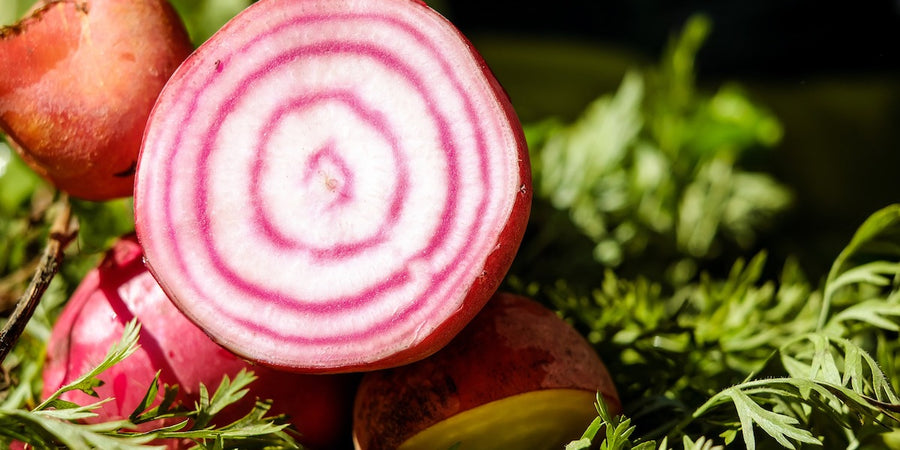June Monthly Growing Guide

A month that sees the longest day and one that also brings bursts of blossom, and dare we say a burst of colour. Pollinators are busy hopping from flower to flower and soon those flowers fade to reveal the crop we have been preparing the kitchen garden over the past few months for these moments.
June job list
Indoors:
Sowing seeds indoors has now moved into the greenhouse but attention needs to be placed on houseplants too. Any spring flowering varieties in bloom will need weekly feeds and keep humidity high.
Greenhouse/Coldframe:
Once all the outdoor growing varieties have moved into the coldframe or planted out, clear and wash out the greenhouse before placing final planting pots with Aubergine, Pepper, and Chillies. Keep humidity high and provide good ventilation to minimise pest like red spider mite, glasshouse whitefly and aphids.
Keep pinching off the side shoots with your tomatoes and keep an eye out for pests such as aphids, whitefly, red spider mite. If you are subject to attack by these pests it is worth checking out biological controls as these are perfectly safe to use and, used correctly, more effective than traditional chemical controls. Many of the chemical controls of the past are no longer available anyway so the organic alternatives are now the mainstream choice.

Outdoors:
Any tender crops like Squash and Courgette can be planted out in beds prepared with well-rotted compost. Although greenhouses and cold frames give a head start to starting seedlings, if such a growing environment is unavailable then now is the time to direct sow Beetroot, Brassica varieties, Courgette, Squash, Beans both Climbing and Dwarf. Erect support for Climbing Beans and lay weed suppressant matting around Squash and Pumpkin plants.
Whilst some vegetables are being sown, harvest crops from spring sown varieties such as Carrots, Beetroot and Spring Onions. Some autumn sown garlic and Onion will be ready to harvest too.
But dont leave any gaps in your soil, keep up successional sowing each fortnight of beetroot, French beans, early carrots, kohlrabi, early peas, lettuce, rocket, turnips, endive, radish, spring onions will give you a constant supply of salads and vegetables at their peak for your plate.
June is good time to sow Swede and whilst earthing up main crop potato continues, the early variety of potato has flowered indicated ready to harvest the egg sized new potatoes.
A soon as Tomato plants come into blossom, start a weekly feed of dilute seaweed feed or tomorite. All flowering plants will benefit from this feed not just tomato plants.
General tasks:
To help with the job of watering, set up a system of irrigation using drip hoses. Mulching also helps conserve soil moisture around established plants and thirsty plants like cucumber.
Most likely you’ll need to water if the weather is dry and bright. Don’t just lightly sprinkle each day, it helps pests like slugs and encourages shallow rooting. Water when the soil is dry a few inches below the surface (stick your finger in to see) thoroughly – about 10 litres per square metre. This should last at least a week of hot, dry weather.
Watch out for slugs & snails. Whether you use pellets, traps, biological controls or just pick them off doesn’t matter as long as you keep on top of the problem
The butterflies are about now as well. Beautiful as they are, check the undersides of your brassica leaves for the yellow or white eggs that will hatch into caterpillars and devastate the plant. You can squash them, wipe or wash them off easily at this stage.
As some flowering plants are to produce food, those that are for beauty should be deadheaded to encourage further flower production.



